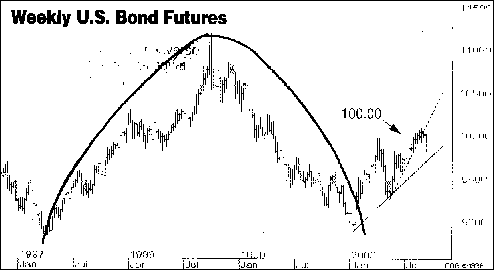Interest Rate Cut will Only Hasten Recession
The recent decision on the part of the Fed to cut interest rates by 0.5% on top of a previous cut was a mistake, an assertion which will be borne out with unmistakable clarity in the months ahead. Unfortunately, all too many within the financial community and mainstream press embrace quite the opposite view, viz., lowering rates can only stimulate the economy and avert the looming possibility of recession. While this belief is very much a part of today's conventional economic thinking, nothing could be further from the truth.
The historical record demonstrates that lower interest rates is effective in galvanizing economic performance only when credit has been rapidly expanding. When a credit bubble bursts and deflation sets in, lowering bank interest rates only augments the growing trend toward credit contraction, or recession. Ludwig Von Mises, the great Austrian economist, called central bank efforts at manipulating the economy through interest rates "disastrous." We are about to discovery the veracity of his observation.
What we are witnessing, as forecast by the Nasdaq plunge last year, is the deflation of the great 1990's credit expansion. Notice how many media advertisements of late exhort consumers to "pay of your debt now" or "live debt-free." This only symbolizes the incipient national obsession with debt amortization. And as all-too many countries have painfully discovered credit contraction is the kiss of death to any financial or economic bull market.
It would seem that we have entered a period of long-term interest rate decline (that is, the "natural" rate of interest) and a corresponding bull market in Treasury bond prices. Look carefully at the chart of 30-year T-bond prices. Notice the bearish parabolic dome that was broken early in 2000. This constituted an important reversal of trend, a trend that is now beginning to influence Fed interest rate policy. Since the spike reversal of last year, T-bond prices have continued to trend higher (inversely to yields) in confirmation of the incipient bull market in bonds. The chart pattern is forecasting considerably higher prices in the months and years ahead.

Indeed, falling interest rates (hence, rising bond prices) are a hallmark of deflation. The U.S. financial and economic sectors will be deflating severely over the next 3-4 years and the rapid decline in interest rates only underscores the growing intensity of this trend. While Fed manipulation of the bank rate of interest may produce desirable effects in the extremely short-term, time will bear out the fallacy of this policy.
Our present case will likely mirror that of 1990's Japan in that any attempt on the part of the Fed at lowering rates will only encourage banks and large institutions to clean their books of bad loans and will not encourage the issuance of new loans. Consumers, meanwhile, will take advantage of lower rates to extinguish their installment debts and amortize their mortgages.
We have seen this situation before—this kind of trend only feeds on itself and grows progressively worse in time. The Fed's latest tinkering with monetary policy—far from averting recession—will only hasten its arrival.
















